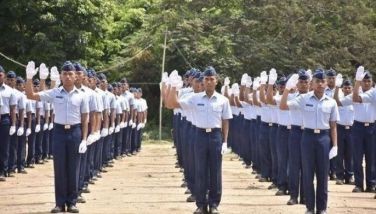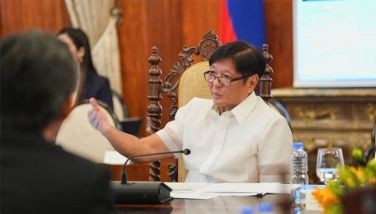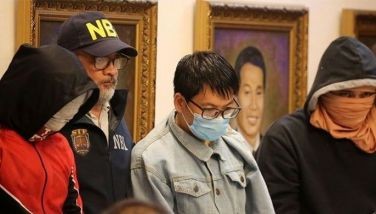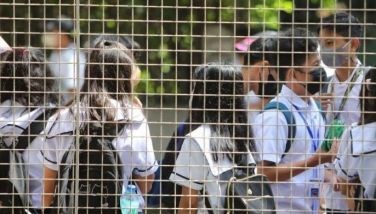Early action, strict 'stay-at-home' measures in some provinces helped keep COVID-19 out
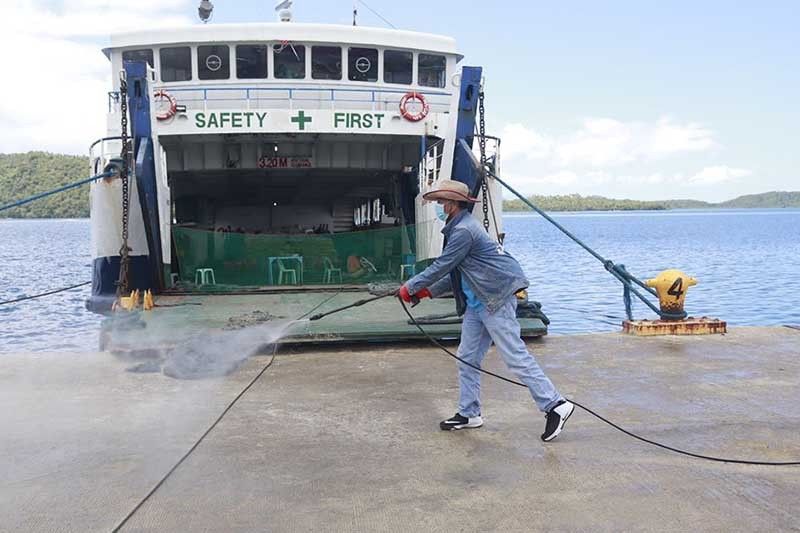
MANILA, Philippines (2nd update 3:27 p.m., May 1, 2020) — In a matter of three months, the new coronavirus has already infected 8,212 people in the Philippines, with around 68% of the nation’s cases detected in Metro Manila.
But the virus that has killed 558 people as of Wednesday seemed to spare nearly a third of the country’s 81 provinces. To date, 25 provinces have not recorded any COVID-19 cases since local transmission was reported in the country on March 7.
These include Batanes, Quirino, Apayao, Kalinga, Mountain Province, Aurora, Camarines Norte, Masbate and Sorsogon in Luzon, and Guimaras, Siquijor, Biliran, Eastern Samar and Southern Leyte in Visayas.
Zamboanga del Norte, Zamboanga Sibugay, Davao Occidental, Sarangani, Agusan del Sur, Dinagat Islands, Surigao del Norte, Surigao del Sur, Basilan, Sulu and Tawi-Tawi in Mindanao have also recorded zero coronavirus cases since the outbreak began.
These provinces, along with areas considered “moderate- and -low risk” will be placed under general community quarantine beginning May 1.
The Department of Health said it is looking into the factors on why these provinces remain virus-free but Health Undersecretary Maria Rosario Vergeire said it may be attributed to their locations.
“Mapapansin natin na karamihan sa kanila ay geographically-isolated. Halimbawa dahil nasa isang isla,” she said in a press briefing last April 24.
Nine of the 25 COVID-19-free provinces are islands.
But aside from their location, the response of local governments played a huge part on why these provinces have zero cases.
Early and decisive action
After the first two confirmed COVID-19 cases in the country were reported, Gov. Arlene “Kaka” Bag-ao signed on February 4—around a month before local transmission in the country was confirmed—an executive order establishing and strengthening the preventive measures of Dinagat Islands against the novel coronavirus.
The order was also issued a month before President Rodrigo Duterte declared a state of public health emergency and two months before the entire Caraga was placed under enhanced community quarantine.
“Through the executive order, Governor Bag-ao tasked several offices to ensure that the virus will not enter Dinagat Islands and in the event that it does, there will be sufficient preparations to guarantee that it will be isolated without affecting the general population,” the province’s information office said in a statement sent to Philstar.com.
To prevent the virus from reaching the island, the province shuttered minor ports. On March 16, Bag-ao also prohibited tourists and vessels not registered in the province’s seven municipalities from going to Dinagat Island.
Even before ECQ was declared in the region, Dinagat Islands already ordered residents to stay home, enforced alternative work arrangements, limited mass gatherings and temporarily suspended non-essential businesses.
Since the outbreak began, no confirmed cases and patients under investigation—now called suspect and probable cases—have been reported in Dinagat Islands.
Quirino Governor Dakila “Dax” Cua also issued a resolution declaring a state of preparedness in the province a month before local transmission was declared.
“We were already seeing in the global media that it’s becoming a serious threat so even without the national government’s advice, the province declared a state of preparedness,” Cua told Philstar.com.
Basilan Gov. Jim Salliman also implemented a "state of public health emergency" in the island province alongside the enhanced community quarantine in the national capital region, where physical distancing was implemented in public and in public transportation.
He stressed, however, that the measure "this is not a lockdown where people cannot move around."
Basilan and Sulu also blocked the entry on March 10 of a ship carrying Filipinos returning from Malaysia that had tried to dock in Jolo and in Maluso.
The 121 Filipinos were instead put in a temporary quarantine area on deserted Sibakel Island in the Basilan Strait and were brought to Zamboanga after three weeks.
Regional cooperation
Another key element in Dinagat Islands’ response to COVID-19 threat is regional cooperation.
“Governor Bag-ao regularly meets with the governors of the Surigao and Agusan provinces and the mayor of Butuan City, the regional administrative center, as well as directors of the regional offices of national agencies and law enforcement via video conferencing,” the province’s information office said.
Caraga was the last region in the Philippines to remain virus-free. There are only three cases in the region—all in Agusan del Norte.
Strict stay-at-home orders
Sorsogon is one of the two provinces in Bicol region that has not had any confirmed COVID-19 infection, along with Camarines Norte.
In Sorsogon, quarantine passes were issues following a ratio of one pass for every 50 residents to limit the number of people outside their home.
Governor Francis “Chiz” Escudero said residents are required to surrender quarantine passes to their respective barangays when they return so the passes will be used by other individuals.
“More or less two percent of the province’s population are allowed to go out at any one time,” Escudero told CNN Philippines on April 20. Sorsogon has a population of 792,949 as of 2015.
Border control
Quirino—a landlocked province home to 188,991 people—is surrounded by Aurora, Nueva Vizcaya and Isabela. Those entering the province are required to fill out a health declaration and contact information form.
People entering Quirino have to state their name, the area whey come from, the reason why they need to go to the province, the person they will visit and their address. They also have to declare if they are experiencing symptoms.
“We believe those are the two critical piece of information that we need… So that if somewhere along the way we detect a case, we will immediately know who to tap and trace. That’s really for contact tracing and control measure,” Cua said.
Rights-based approach
The provincial government of Dinagat Islands also made sure that preventive measures put in place will respect the human rights and dignity of its around 127,000 constituents.
“In ensuring social distancing, [Bag-ao and key officials] had to paint scenarios on the effects to the right to food and freedom of movement. If these liberties were negatively affected, they thought of ways on how to modify the policy proposal so that the full enjoyment of human rights will go unhampered,” the province’s information office said.
“For Governor Bag-ao, threats of punishment shouldn't be the way to make people respect laws and rules. Citizens need a government that knows how to explain regulations without resorting to muscle-flexing. In her administration, it is important to involve the people in the process and craft rights-based laws that would create an atmosphere that promotes fundamental democratic values,” it added.
- Latest
- Trending


















